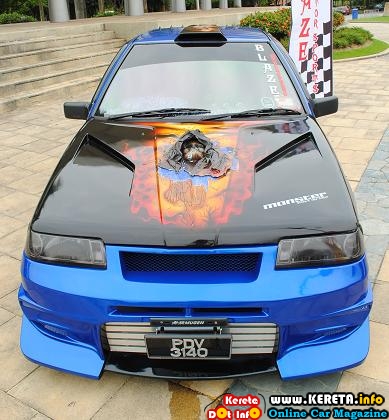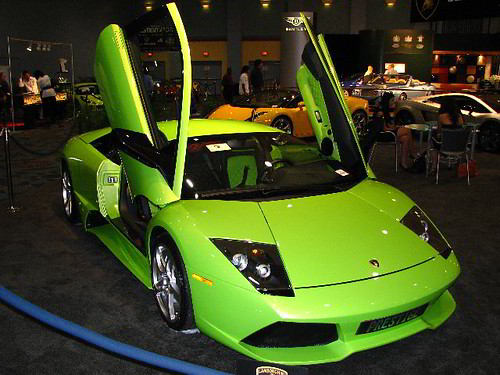|
|
|---|
Friday, November 27, 2009
Electric cars - Auto Design Electrified. TNR.v, CZX.v, WLC.v, LI.v, RM.v, CLQ.v, AVL.to, RES.v, QUC.v, SQM, FMC, ROC, NSANY, BYDDY, DAI, RNO, BMW, F,
Posted by andre at 3:39 PM

Electric cars are not vacuum cleaners with wheels any more and electric power train opens new possibilities. These babies are beautiful and they are coming in numbers:
"We have a very strong demand for lithium and REE according to these estimations, with 21kg of lithium carbonate (LC) per each BEV with 24 kWh battery like Nissan Leaf (Electric vans like above will have bigger batteries) we will need 4.2 mil t of LC only for U.S. market with current level of worldwide production 120000t and with BEV almost zero. It means that we need to more than double production level for every year for the next 35 years to produce enough lithium for batteries just to feed the U.S. electric cars fleet. We would like to remind you here that China became the biggest auto market this year and their ambitions in electric space match their reserves with over 2 trillion dollars now. With REE situation will be even more severe - starting from 2014 China will consume all produced REE for its own internal demand. Where all this lithium and REE will come from?"
"The motoring world is moving slowly but surely towards electric vehicles. Right now, however, only a handful of major manufacturers have stuck their head above the parapet and pledged their future allegiance to sparks rather than fossil fuels.
Unlike many other marques Nissan cars don’t attempt to follow the same visual identity - instead each addresses its own specific criteria. Here’s our list of some of the most iconic ones.
Nissan began toying with the electric vehicle as far back as 1947 when it produced the Tama. This year, however, the firm unveiled its first mass-produced global electric car, the Leaf, together with a bold future vision for green city driving in the form of the Land Glider. Both shown at the 41st Tokyo Motor Show, they mark a major commitment to making electric work within the mass market.
W* caught up with Alfonso Albaisa, vice president, and Martin Uhlarik, project lead designer at Nissan Design Europe in London. The Paddington studio has just won the design competition for the first Infiniti electric car, and his team will be responsible for sketching many future Nissan electric cars.
What inspired the unusual narrow shape and the motorbike driving-feel of the Land Glider electric concept car?
Unlike many other marques Nissan cars don’t attempt to follow the same visual identity - instead each addresses its own specific criteria. Here’s our list of some of the most iconic ones.
Nissan began toying with the electric vehicle as far back as 1947 when it produced the Tama. This year, however, the firm unveiled its first mass-produced global electric car, the Leaf, together with a bold future vision for green city driving in the form of the Land Glider. Both shown at the 41st Tokyo Motor Show, they mark a major commitment to making electric work within the mass market.
W* caught up with Alfonso Albaisa, vice president, and Martin Uhlarik, project lead designer at Nissan Design Europe in London. The Paddington studio has just won the design competition for the first Infiniti electric car, and his team will be responsible for sketching many future Nissan electric cars.
What inspired the unusual narrow shape and the motorbike driving-feel of the Land Glider electric concept car?
Alfonso Albaisa: The car was inspired by the new generation of three-wheelers. These narrow cars, though, are not that stable. The Land Glider, therefore, leans automatically into corners - the feeling is very natural as the driver moves automatically with the car’s motion. This shifts the centre of gravity and adds stability to the car when going around corners.
How has the lack of a combustion engine helped achieve this narrow shape?
How has the lack of a combustion engine helped achieve this narrow shape?
AA: Electric vehicles create so many possibilities. If this were an internal combustion engine car you would have to deal with a lot of extra baggage and weight. Instead, the flat and compact lithium-ion battery (which Nissan makes in-house and uses to power motors housed inside the wheels) takes little space and has allowed us to achieve this narrow architecture.
Do you believe that green cars should have their own unique architecture and formal language?
Do you believe that green cars should have their own unique architecture and formal language?
AA: They are finding their own architecture. The formal language, however, is more of a conscious effort - it’s the intentional part. The zero emission car doesn’t need its own design language, but it is important not to express it just like a regular car.
Martin Uhlarik: The potentials are endless with the package, but you can only push this with niche vehicles. The more expensive the car, the less experimental you can be.
How has this been expressed in the Leaf electric production car, which looks more like a conventional square shaped hatchback?
Martin Uhlarik: The potentials are endless with the package, but you can only push this with niche vehicles. The more expensive the car, the less experimental you can be.
How has this been expressed in the Leaf electric production car, which looks more like a conventional square shaped hatchback?
AA: Most people think the teardrop is the most aerodynamic shape, but it needs to be much longer to have enough flow. For a car the size of the Leaf, the square shape is the best as it controls the airflow. You want the air on the side and top to move smoothly over and end at the rear where the semi-square shape directs the air away from the car. We call it the ‘aesthetics of effortlessness’.
MU: There is the sub message that you need to get across with electric cars. The Leaf is a standard vehicle but certain elements say it is a green car. For instance, the blue lighting has an electrical subtext. The aerodynamic package is also giving an eco message.
Why use LED lights, which are substantially more expensive to produce?
MU: There is the sub message that you need to get across with electric cars. The Leaf is a standard vehicle but certain elements say it is a green car. For instance, the blue lighting has an electrical subtext. The aerodynamic package is also giving an eco message.
Why use LED lights, which are substantially more expensive to produce?
AA: The LED light intensity is so strong it allows us to reduce the size of the headlights. Additionally, regular bulbs sap energy out of the battery, but with LEDs you have more light without being conscious of draining the energy from the car.
Electric powered cars have no sound at all. How will pedestrians be warned of an approaching car?
Electric powered cars have no sound at all. How will pedestrians be warned of an approaching car?
AA: We don’t have the sound yet and we don’t want to do something too normal. The more luxury Nissans and the Infiniti brand would need a unique sound. Electric performance cars have tremendous power so this will have to impact on their choice of sound too. It is such a new subject - I love the fact that we are ‘sound brain-stormers’. It is so artistic trying to find a sound that will make you feel you are contributing to the benefits of green driving.
MU: The sound also needs to be geographically different as there are different cultural references.
A sim-card in the Leaf connects the car with the house and a sophisticated IT support system. Will the future car become simply another electronic gadget?
MU: The sound also needs to be geographically different as there are different cultural references.
A sim-card in the Leaf connects the car with the house and a sophisticated IT support system. Will the future car become simply another electronic gadget?
MU: In the future this is going to go a step further so that once you plug your car in to the house’s electricity supply you have affectively connected the two worlds. It needs to become one seamless network of work, commute and home. How this will impact on the visual language depends on the car and who it is aimed at.
Do you believe there is a place for high-performance electric cars?
Do you believe there is a place for high-performance electric cars?
AA: There are people who don’t love sexy sports cars. My teenage kids, for instance, are obsessed with electric cars because they feel they are helping the environment. ‘It’s cool not to pollute,’ they say.
On the other hand, electric cars have a lot of torque so they are great for sports cars. If I were to design one from scratch it would be a lot lighter in weight than say the GT-R - and definitely less brutal looking. You should celebrate mostly torque and acceleration, express nimbleness and explosive speed with a green sports car."
On the other hand, electric cars have a lot of torque so they are great for sports cars. If I were to design one from scratch it would be a lot lighter in weight than say the GT-R - and definitely less brutal looking. You should celebrate mostly torque and acceleration, express nimbleness and explosive speed with a green sports car."
Subscribe to:
Post Comments (Atom)
















0 comments:
Post a Comment